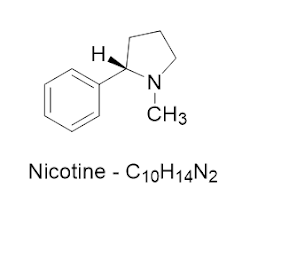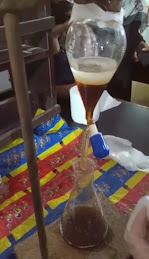Extraction
of Piperine from Black Pepper
Introduction:
This experiment aims to extract
piperine, the active compound responsible for the pungent taste and health
benefits in black pepper. Piperine is a bioactive alkaloid with various
medicinal properties, making it a valuable compound to isolate and study. The
extraction process involves the use of a suitable organic solvent to isolate
piperine from the crushed black pepper.
Theory:
Piperine (C₁₇H₁₉NO₃) is a crystalline
alkaloid found in black pepper. It is responsible for the pepper's
characteristic pungency and acts as a bioenhancer, enhancing the absorption of
various nutrients and drugs. In this experiment, the piperine will be extracted
from black pepper using an organic solvent through a process called solvent
extraction.
Chemicals:
- Black Pepper (ground)
- Ethanol (95% or higher purity)
- Distilled Water
Glassware:
- Conical Flask
- Separatory Funnel
- Glass Stir Rod
- Buchner Funnel
- Filter Paper
Procedure:
- Weigh 50g of ground black pepper and transfer it to a conical flask.
- Add 200 mL of ethanol to the flask and stir the mixture using a glass rod.
- Let the mixture sit for about 30 minutes, stirring occasionally to enhance extraction.
- Set up a Buchner funnel with filter paper and filter the mixture to separate the solid residue (undissolved particles) from the ethanol extract.
- Transfer the filtrate (ethanol extract) to a separatory funnel.
- Add 50 mL of distilled water to the separatory funnel and shake gently to allow for phase separation.
- Allow the two layers to settle, with the denser water layer at the bottom and the lighter ethanol layer at the top.
- Carefully drain the bottom water layer, leaving behind the ethanol extract (containing piperine) in the separatory funnel.
- Transfer the ethanol extract to a pre-weighed evaporating dish.
- Evaporate the ethanol using a water bath or a rotary evaporator to obtain the crude piperine.
Calculations:
Given data: Initial amount of black pepper = 50 grams
Concentration of piperine in the extracted crude extract= 5%
Step
1:
Calculate the amount of piperine in the
extracted crude extract.
Amount of piperine = Volume of crude
extract X Concentration of piperine
Assuming the volume of crude extract is
100 mL;
Amount of piperine = 100 mL X 5% (0.05)
Amount of piperine = 5 grams
Step
2:
Calculate the percentage yield.
Percentage yield = (Amount of Crude
Piperine Obtained / Initial Mass of Black Pepper) X 100
Percentage yield = (5 g / 50 g) X 100
Percentage yield = 10%
Therefore, based on the given data, the
percentage yield of piperine from the extraction of 50 grams of black pepper
would be 10%.
Observations:
Piperine
(C₁₇H₁₉NO₃)
Color
of Piperine: Piperine is a yellowish-brown
crystalline compound.
Molar
Mass: 285.34 g/mol
Melting
Point: The melting point of piperine is approximately
128-131°C.
Precautions:
- Work in a well-ventilated area to avoid inhalation of ethanol vapors.
- Wear appropriate personal protective equipment, including lab coats and gloves.
- Use a fume hood when handling volatile solvents.
- Handle the glassware with care to avoid breakage and injury.
- Avoid direct contact with eyes, skin, and mouth when handling black pepper or piperine.
Conclusion:
This experiment successfully
demonstrates the extraction of piperine from black pepper using ethanol as the
solvent. The obtained crude piperine can further be purified and analyzed for
its potential medicinal properties.





.PNG)

.jpg)

.PNG)







.jpg)
.jpg)
.jpg)
.jpeg)




